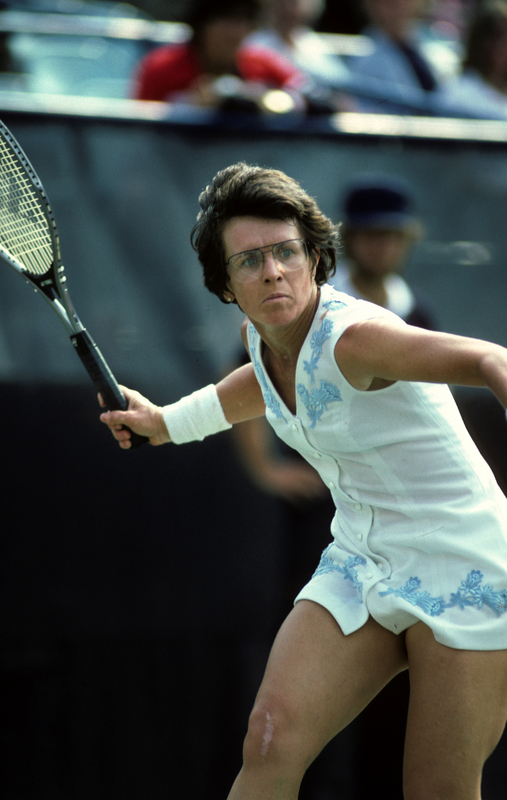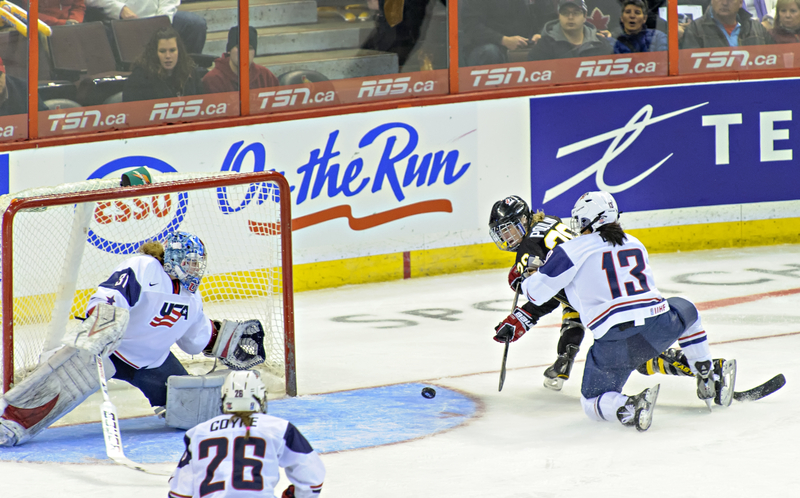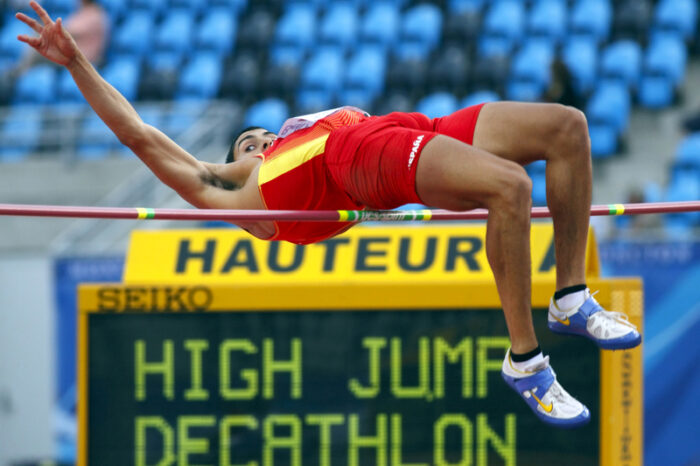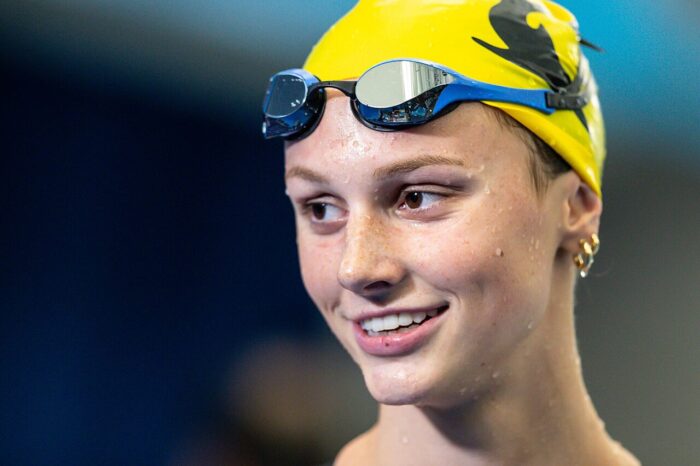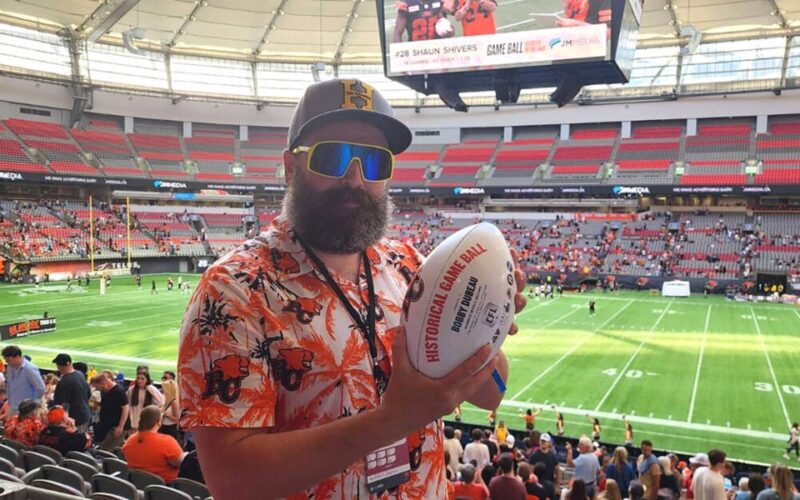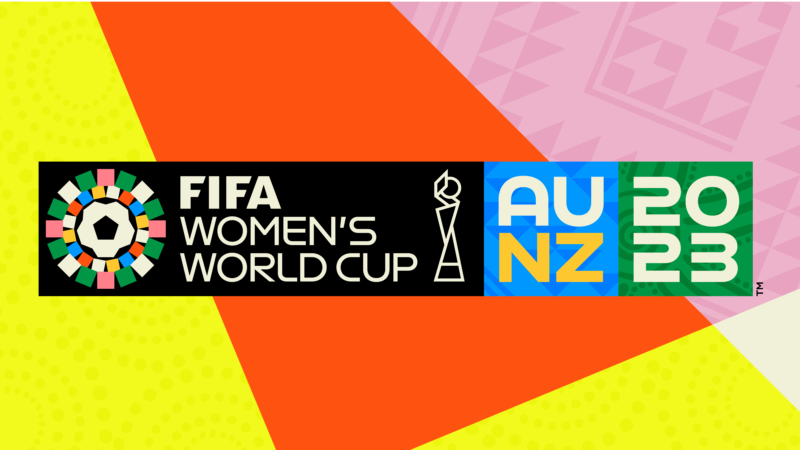On Wednesday, May 1, the Canadian Women's Hockey League — one of North America's two women's pro hockey leagues — officially ceased to exist.
When the CWHL announced that it was planning to shut down on March 31, North America's other women's league, the National Women's Hockey League (NWHL) soon said that it was looking to step in to fill the void. It wanted to add a Montreal and Toronto team to join its five American teams. Then Thursday May 2 happened...
Marie-Philip Poulin and Kendall Coyne-Schofield play for different countries and in different leagues... but they're unified on this women's hockey boycott. (Getty Embed)
Yesterday, over 200 of the world's top women's hockey stars — including Marie Philip-Poulin, Amanda Kessel, Kendall Coyne-Schofield, and Brianne Jenner — announced that they were boycotting (or refusing) playing in any North American women's league until they get the "resources that professional hockey demands and deserves."
We may represent different teams, leagues and countries but collectively we stand as one #ForTheGame pic.twitter.com/TdKFlYxs6V
— Marie-Philip Poulin (@pou29) May 2, 2019
Why would these athletes refuse to play instead of trying to make the NWHL stronger? This women's hockey boycott is a complex issue that mixes sports, gender equality, and business.
But we're here to help! Let's break the ice...
Why wouldn't the NWHL be that league?
NWHL action between the Boston Pride and Connecticut Whale. (Getty Embed)
Ever since the NWHL began in 2015, critics complained that it was counterproductive to have two leagues (it and the CWHL) competing when one strong league was what was needed. So when the CWHL ended, some people saw a silver lining. The NWHL could expand and create a league of American and Canadian teams, much like the NHL.
This boycott, which features both CWHL and NWHL players, really messes that plan up. Though NWHL Commissioner Dani Rylan is still moving forward with her league's fifth season, she will be without most of the best players. What would it take to win those players back?
So what is a sustainable league?
The scene in a NWHL dressing room... (Getty Embed)
Well, money to start. The NWHL can only afford to pay its players between $5,000–$7,000 US a season. That's not much. Most CWHL players made even less — only $2,000 CDN (about $1,500 US) a season. By comparison, the lowest salary for an NHL player is $525,000 US a season.
...and a NHL one. (Getty Embed)
Any women's player must therefore work a day job in addition to trying to practice and travel like pros. In the minds of the players behind the boycott, these low salaries deeply affect their ability to perform in the same way that NHLers do.
But isn't it a business?
Arenas used in the CWHL and NWHL cannot hold many fans. (Getty Embed)
The most common complaint that you'll hear from people who don't like this boycott is that any league is a business. It needs customers, a.k.a. fans, to buy tickets and merchandise so it can make money and pay its players. Plenty of other sports leagues have gone out of business because they couldn't attract a fanbase. Why should women's hockey be any different?
It's a fair point. But these athletes would argue that since no one has ever really invested much money in women's hockey to begin with, they've never really been given much of a chance to succeed.
The proper start
Want a good recent example of the difference money makes?

Investors and big name sponsors have given the CPL the kind of start that women's hockey players can only dream of. (Canadian Premier League)
Only last weekend, we wrote about the start of a brand new men's soccer league in Canada, the Canadian Premier League (CPL). This seven-team league was started from scratch thanks to investors (people with money) and sponsors (companies who pay the league to advertise or have their equipment used by players).
Thanks to this assistance, this league is able to pay its players about $50,000 to $60,000 CDN a year. Its players can focus on soccer completely, and train without distraction. The CPL also has a national TV deal with CBC to promote the league and excellent stadiums to welcome their fans.
None of these things guarantee that the CPL will be a hit. But its players couldn't really ask for a better chance to succeed.
All they ask
The WNBA is often used as an example of what women's hockey should aspire to. (Getty Embed)
Essentially, this is the kind of support that the women's hockey boycott is demanding. It is something that the sport has never received — despite the best intentions of the CWHL and NWHL, their leagues never had a chance.
So who can help?
Many point first to the NHL (which actually legally owns the name WNHL, as well as the Twitter handle @WNHL, so they can't say that they haven't thought about it...). This would be a model that is similar to the WNBA, which the NBA owns and helps to run.
But in the end, they need people with money to decide to make a difference. The CPL was started when Hamilton software millionaire Bob Young said, "Why doesn't Canada have its own soccer league?"
Will now be the moment that someone else stands up and asks the same about North American women's hockey?
These players are betting their careers on it.
 Shutout! Goaltender Shannon Szabados is one of over 200 women's hockey stars boycotting hockey next season. (Steve Kingsman - Dreamstime.com)
Shutout! Goaltender Shannon Szabados is one of over 200 women's hockey stars boycotting hockey next season. (Steve Kingsman - Dreamstime.com)
